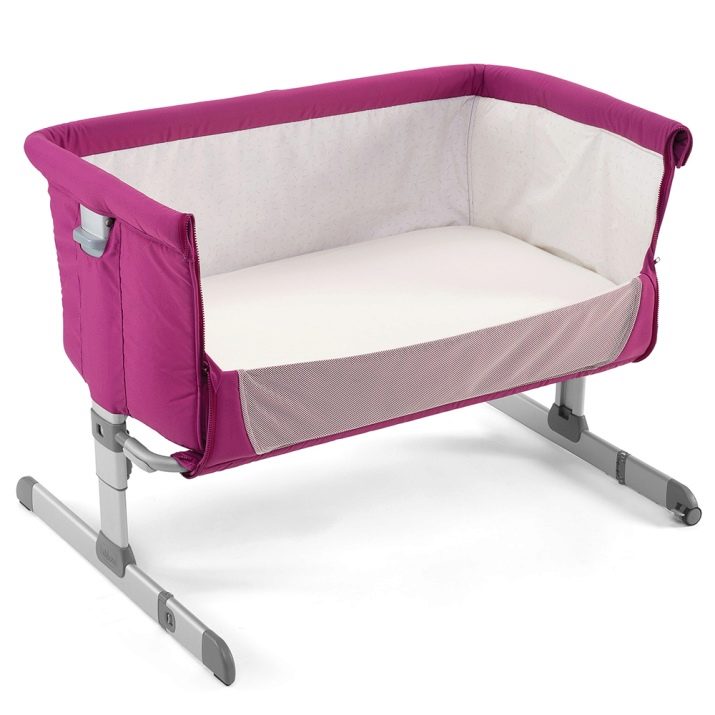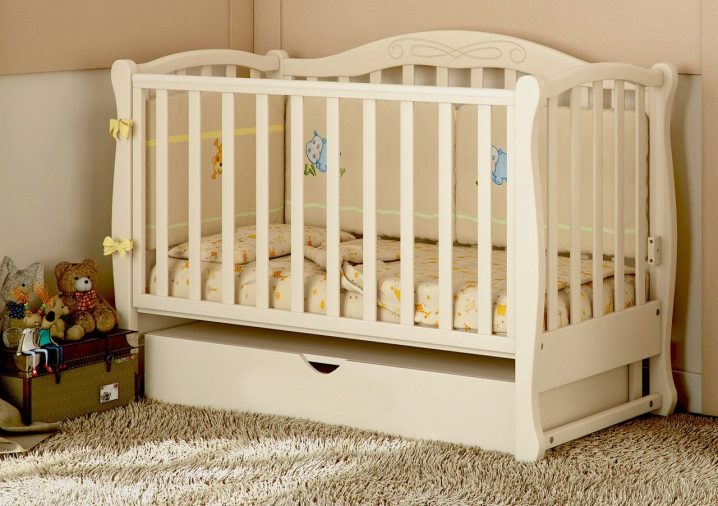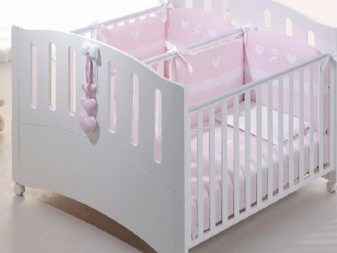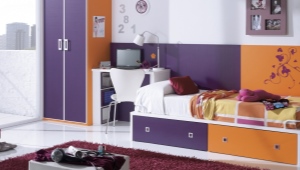Size of baby cot for newborns
A cot is one of the most important pieces of furniture for a newborn, which will spend most of the first year of life in a bed. The crib becomes not only a baby’s sleeping place, but also a play area where the baby gets to know the new world, so it’s important to choose a safe and environmentally friendly model. The modern range of cots is impressive in its design and forms, a set of additional functions, materials used, and it seems that the choice is difficult. We will understand the features of furniture for a newborn and talk about how to make the right choice.
Equipment
Traditionally, a cot consists of a base that is fenced on four sides with slats or a solid element. Speaking of classic models of wood in the format of a rectangular or round, oval shape, it is worth noting that each of the models has a bottom (lath), four walls, one of which is removable and has a mechanism for raising and lowering. At this similar features end.
Differences in the configuration of the crib:
- The presence of the swing mechanism - longitudinal or transverse pendulum. It is not found in all models, and its presence is determined by the choice of parents.
- Main material. Traditionally, wood is chosen, but there are combined wood + chipboard models (such models are more budgetary in value), wood + leather (eco-leather or natural) and others. There are plastic models.
- Drawers for storage.
- The color of the bed and its design.
- The mechanism of raising and lowering the bottom is present in most modern models, but in the most budget versions it may not be.
Popular materials
Wood is not always taken as a basis for a baby bed, there are also plastic models, products made of chipboard and combined options depending on the preferences of the parents and the budget allocated for the purchase.
Tree
The most used material for the production of not only cribs, but also the rest of furniture for newborns, preschoolers and teenagers. Hard woods such as oak, beech or ash are often used with excellent consumer properties, environmental friendliness and long service life, but pine wood is an inexpensive hypoallergenic material.
Classic rectangular or round beds for children from birth to adolescence are made of wood. Traditionally, young parents choose rectangular models with sides on each of the four sides of the product of a standard size 120 * 60 cm, since such a model will last up to three years or until the baby grows out of the crib.
The advantages of a wooden crib for a child can be called the fact that such models are hypoallergenic, provided that they do not have additional treatment with paint or varnish, they are stable and durable in their design, are customary in design and are diverse in appearance, besides, the models differ among themselves in bundling - types of legs, mainly. Wooden beds for children look concisely and expensive, among them there are models of the classical form with smooth curves and products in modern style.
Chipboard, MDF
DSP, MDF or combined models with wood: these beds will be a budget equivalent and have their own advantages, among which is noted their lightness and practicality. For example, the frame of the crib can be completely wooden, and additional elements such as laths will be made of high-quality plastic, chipboard, MDF. It is important that the materials used do not have a hazardous treatment for the baby: smell the product and beware of the unpleasant smell that comes from the bed.
Plastic
Plastic is also used in the manufacture of children's furniture, in particular, beds for babies. High-quality material and its flexibility allows you to create products that are unique in shape and design. Often plastic and other polymeric materials are used in the production of children's cradles of various shapes, from the usual rectangular to round and oval.
Plastic is used to make baby cots, which are convenient for traveling or a small apartment, because they have not only a sleeping place for an infant, but also a play area.
Standard sizes
There are different sizes of cots, depending on the type of product and the age of the child.
For newborns, the standard size is considered to be the product 120 * 60 cm (this measurement is accepted in Russia, in Europe the size 125 * 65 cm is recognized as the standard) - a children's classic bed of a rectangular shape from 0 to 3 years.
Transforming beds with built-in cabinet and changing table have standard dimensions 140 * 70 cm,the size of the bed is determined depending on the position: in its original form it is 120 * 60 cm and increases in length up to 140 cm. bed size, not the total area of the product.
Cot beds also have a standard - 90 * 50 cm, which means the size of the bed for a child.
Sizes of different types
A small cradle, which is used for sleeping a newborn, has a standard size of 97 * 55 cm, the height varies from model and has the ability to adjust. Children's cradles are neat in design and small in size, but six months later, a standard child grows out of a similar bed and requires a new one. The cradle will be appropriate for a small apartment and those parents who are willing to spend money on children's furniture and replace it in a timely manner. It is convenient to use a lullaby in the parent’s bedroom for the first six months of the baby’s life, when you want to keep the “mother-baby” connection as long as possible.
The attached model will be a continuation of the parental bed,where the newborn can comfortably sit. The dimensions of the standard bed are 90 * 50 cm, which is slightly smaller than the classic model. It is important that the attached model has the ability to adjust the bottom for a “fit” in height with the parent bed, but it is better to choose in advance the model that perfectly matches with the adult. Another important point is the presence of fastening elements of the crib to the adult, which will guarantee the safety of the child during sleep.
The classic bed for newborns has the standard Russian size 120 * 90 cm, in Europe these measurements are 5 cm more - 125 * 95 cm. The classic among the beds is characterized by the presence of a swing mechanism - a pendulum (it can be longitudinal and transverse) or its absence, then the bed has legs and removable wheels or skids.
The classical model, as a rule, has two positions of the bottom, a rack bottom, the possibility of lowering the front side, some models have an additional drawer in the bottom.
Transforming cots will be a good investment in the future of the child: it is useful for a newborn baby and will serve to reach 7-8 years old (until the moment the child grows out of the product).The transforming bed has a built-in dresser and changing table, its size is standard 140 * 70 cm, the sleeping place for a baby is 90 * 60 cm with the possibility of increasing. After the initial appearance of the product becomes small for the grown-up baby, the chest of drawers with the changing table is removed, the bed expands.
There are models of children's furniture for twins or twins, representing a product with the parameters of 130 * 125 cm. The bed will serve up to about 3 years of life for the little ones, then you have to replace it with a spacious two-tier model or separate products for each child.
In addition, there are cots with various sizes, which are a playpen in the lower part and a berth at the top. The bed is small and will be used by the child for up to a year, after which the baby will hardly fit there.
Non-standard size beds are unique in their design, for example, round and oval models with dimensions of 78 * 76 * 81 cm (length * width * height), which “grows” up to 128 cm in length. its increase in length, which allows the use of an expensive model up to 5 years.
It is worth noting that the parameter 120 * 60 cm, used to designate the size of a children's bed of the classical form, designates the dimensions of a berth, the bed itself may be 6-10 cm larger due to the presence of additional elements - sidewalls, sides. This applies not only to the model, but also to some other types of children's furniture.
We select textiles
Choosing a crib is not complete without the purchase of textile products for children's furniture. Often parents choose classic beds for a newborn with a standard size of linen, for example, 120 * 60 cm or 140 * 70 cm. Sheets in a crib are selected in accordance with the mattress and its dimensions, the most common measurement is 120 * 60 cm or 125 * 65 cm, which means the size of the bed for the baby and the size of the sheets.
Cots for small children of non-standard size require the selection of smaller textiles, the one that fits the mattress, blankets and pillows when it is available. The size of the bed linen is determined strictly with the parameters that correspond to the size of the blanket and mattress, so it is advisable to select elements of textiles along with the bed, and to facilitate this work, you should choose the standard 120 * 60 cm or 125 * 65 cm.
Safety first. Important nuances
The main criterion when choosing a children's bed for a child of any age is product safety. Let's talk about the important nuances that are worth noting before buying furniture for the child and not to forget, especially during the transaction.
- Smooth rounded corners will be the first signal of the right choice. Non-sharp corners will fall by the way even to parents, who now and then will approach the cradle of the child.
- Availability of boards from 4 sides; Exception - added models of cribs, most of which have additional bumpers.
- The distance between the slats should not exceed 6 cm, otherwise the kid will be able to run his head between them.
- The stability of the bed - another important criterion when choosing children's furniture. If the bed has a “pendulum” mechanism, make sure that it can be securely fixed for the subsequent time after the baby has learned to get up independently in the crib.
- It does not matter what material of furniture you choose as the basis; It is worth to smell the elements of furniture and note whether there is an unpleasant or sharp smell? The presence of industrial aromas indicates the use of toxic dyes to ensure the safety of the product check with the seller for certificates on the product.
Another important point: when buying a classic bed for a baby, it is important to choose a model with 2 bottom positions: the first high level is used for about six months or until the child learns to sit on his own and make attempts to get up. The second lower position is set for the safety of the baby - the child will not be able to fall out of the crib even in a standing position, but remember that it is dangerous to leave the baby unattended even in the crib.























































































